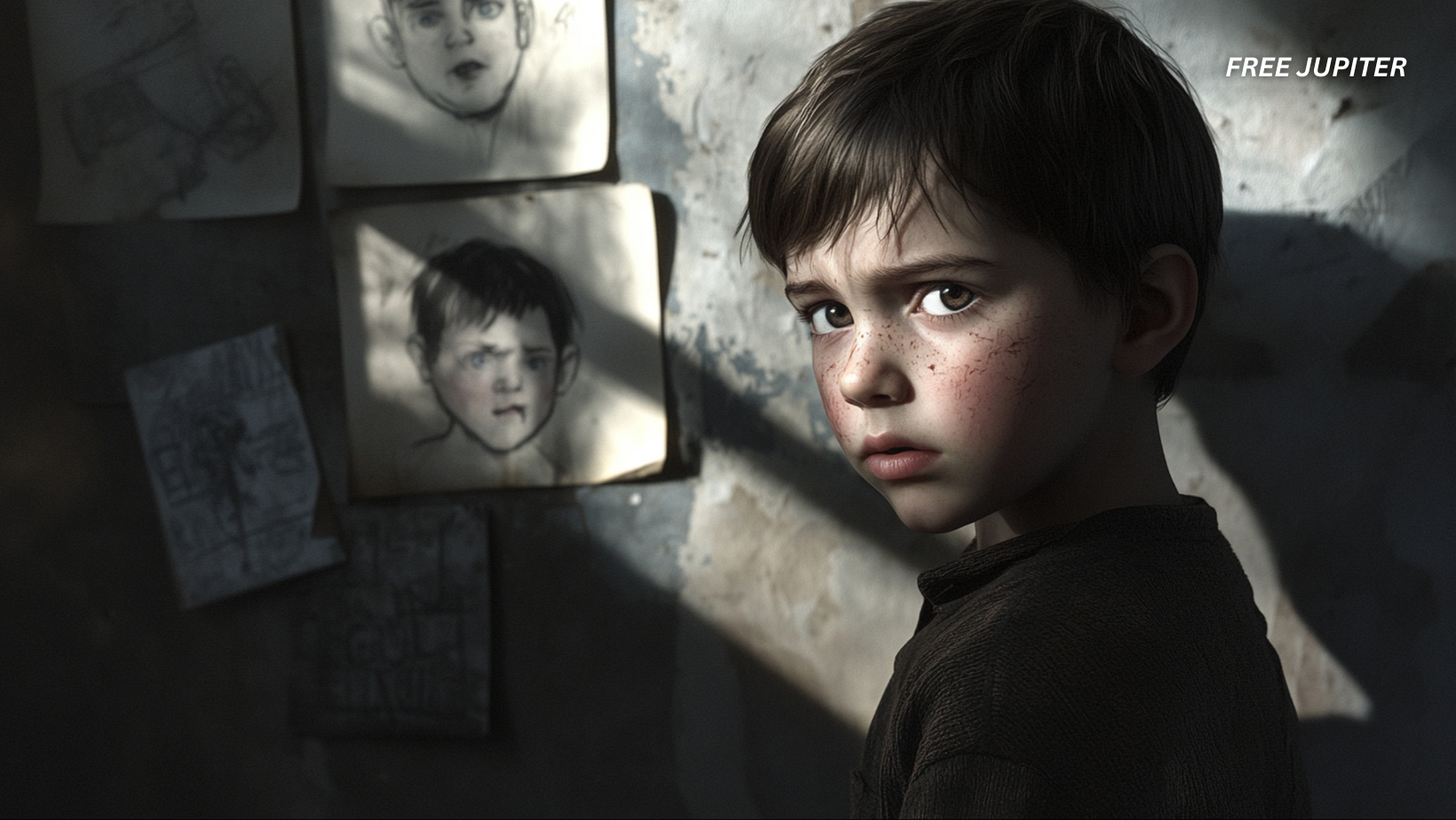Friendly Note: FreeJupiter.com shares general info for curious minds 🌟 Please fact-check all claims—and always check health matters with a professional 💙
Children are natural boundary-testers. They fib, they argue, they sometimes behave in ways that make adults wonder if they’ve secretly joined a rebellion. That’s part of normal development—it’s how they learn about rules, consequences, and empathy.
But mental health experts caution that when certain behaviors appear frequently, across different situations, and without improvement over time, they may signal something more serious than ordinary mischief. In some cases, these patterns can be early markers of traits that, if left unaddressed, may develop into antisocial or sociopathic tendencies in adulthood.
This doesn’t mean that every child showing one of these signs will grow up to cause harm. Human behavior is complex, and children are still highly adaptable. But spotting patterns early can open the door to guidance, therapy, and positive change.
Here are eight early signs that experts say deserve careful observation—along with a deeper look into why they matter.
1. Chronic Lying Without a Hint of Guilt
Almost all children experiment with lying—it’s a kind of social training ground. They might lie to avoid punishment (“I didn’t break the vase!”) or to impress others (“I met a movie star yesterday!”). Usually, these fibs are followed by some signs of guilt or a sheepish confession when confronted.
The red flag appears when lying becomes habitual and emotionless. Children with this pattern lie easily, even when the truth would be simpler. They may invent stories purely to control situations or gain an advantage, and when caught, they show no discomfort—no downcast eyes, no apology, not even a flicker of embarrassment.
Over time, persistent dishonesty without remorse can erode trust between the child and the adults around them. It also signals a lack of concern for how actions affect others—a trait that, unchecked, can become a foundation for more manipulative behaviors later.
2. Deliberate Cruelty Toward Animals or People
Accidental harm can happen in childhood—roughhousing can go too far, or a curious toddler might pull a cat’s tail without realizing it’s painful. That’s not necessarily cause for alarm.
What raises concern is intentional and repeated harm, especially when it seems to bring satisfaction or amusement. This can include hurting pets, smaller children, or even peers in ways that are clearly meant to cause pain or distress. Experts say this isn’t impulsive aggression—it’s calculated, often planned in advance, and shows no concern for the victim’s suffering.
Why it matters: cruelty toward animals is one of the most consistent early warning signs in behavioral psychology for potential future aggression toward humans. When compassion is absent and causing pain becomes a source of enjoyment, intervention should be swift and thorough.
Read more: Using These 10 Words In Everyday Conversation May Mean You Have Above-Average Intelligence
3. A Lack of Genuine Empathy
Children aren’t born with a fully developed sense of empathy—it grows gradually through experiences and guidance. But by a certain age, most kids can at least recognize when someone is upset and offer some kind of response, even if awkwardly.
A child showing no emotional connection to others’ distress, even in situations where compassion would normally emerge, may be experiencing more than just shyness or social discomfort. This might look like:
- Watching a friend cry without offering comfort
- Ignoring someone in obvious pain
- Seeming puzzled—or even amused—when someone is hurt
Experts note that these children may not link wrongdoing to emotional consequences in the same way others do. They might not feel internal satisfaction from making someone else happy and may instead focus entirely on self-interest.
4. No Sense of Guilt After Doing Harm
Guilt, while unpleasant, is an important moral compass—it helps us learn from mistakes. A child who breaks a rule, hurts someone, or damages property usually shows some sign of regret: lowered voice, reluctance to repeat the act, or an apology (even a reluctant one).
Some children, however, display a striking absence of remorse. They may:
- Justify their actions (“They deserved it”)
- Blame others (“It wasn’t my fault”)
- Carry on as if nothing happened
Without the ability—or willingness—to feel guilt, there’s little internal pressure to change. This can make behavioral correction much more challenging, especially if the child sees no reason to avoid repeating the behavior.
5. Using Manipulation as a Primary Tool
Negotiating for what you want is normal. Children do it all the time (“If I eat my vegetables, can I have dessert?”). But when a child’s primary way of interacting is through calculated manipulation, the pattern becomes troubling.
This might include:
- Twisting facts to shift blame
- Playing one adult against another to get a desired outcome
- Using someone’s trust or feelings for personal advantage
The difference between normal persuasion and manipulation lies in intent and frequency. Manipulative behavior as a consistent strategy—especially with no concern for fairness—suggests the child is focused on control rather than cooperation.
6. Faking Emotions for Personal Gain
Kids sometimes exaggerate feelings—it’s part of testing boundaries. But frequent, strategic faking of emotions is different. A child might pretend to be sad, scared, or even affectionate to avoid consequences, get attention, or influence someone’s decision.
Over time, habitual false emotional displays can cause real harm. If peers, teachers, and family members stop believing the child’s emotional expressions, genuine cries for help may be ignored. This can isolate the child further and reinforce manipulative habits.
Read more: Psychology Says These 19 Little Behaviors Show a Man’s True Character
7. Bullying Without Regret
Bullying is sadly common in childhood, but it usually comes with a chance for change—especially when the bully feels remorse, understands the harm done, and takes steps to make amends.
In contrast, a child who bullies consistently and unapologetically may be demonstrating a much deeper disregard for others’ rights and feelings. This type of bullying is often deliberate, sustained, and aimed at asserting dominance, whether through physical intimidation, verbal abuse, or social exclusion.
Without intervention, such patterns can harden into personality traits that are difficult to reverse in adolescence or adulthood.
8. Ignoring Consequences and Refusing to Change
The whole point of consequences—time-outs, loss of privileges, extra chores—is to help children connect actions with outcomes. When they work, behavior changes.
But some children seem immune. They may repeat the same behavior regardless of punishments, warnings, or discussions. They might even respond with open defiance, viewing discipline as irrelevant or unfair.
This isn’t about the occasional stubborn streak—it’s about a consistent, cross-situation resistance to authority and feedback. Left unchecked, it can escalate into chronic conflict at home, at school, and in other relationships.
A Note on Interpretation
It’s important not to leap to conclusions. Children can show one or more of these behaviors during stressful times—such as a move, divorce, or bullying from others—without it signaling a permanent problem.
What matters is pattern and persistence:
- Does the behavior happen in different places (home, school, social settings)?
- Has it been going on for months or years?
- Does it seem unaffected by discipline or encouragement?
If the answer to these questions is “yes,” experts recommend seeking professional assessment. Early support—from therapists, counselors, and supportive adults—can redirect harmful patterns toward healthier ways of thinking and behaving.
Read more: Why You and Your Siblings Might Have Lived Totally Different Lives in the Same House
The Takeaway
These signs aren’t a diagnosis—they’re an invitation to pay closer attention. The earlier a concerning pattern is recognized, the more time there is to address it and help the child develop empathy, accountability, and healthier coping strategies.
Children’s personalities are still forming, and with the right mix of structure, compassion, and guidance, even troubling behaviors can be reshaped into strengths. Early action is less about labeling a child—and more about opening the door to a better future.










